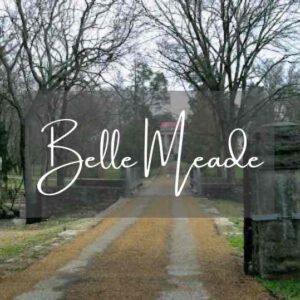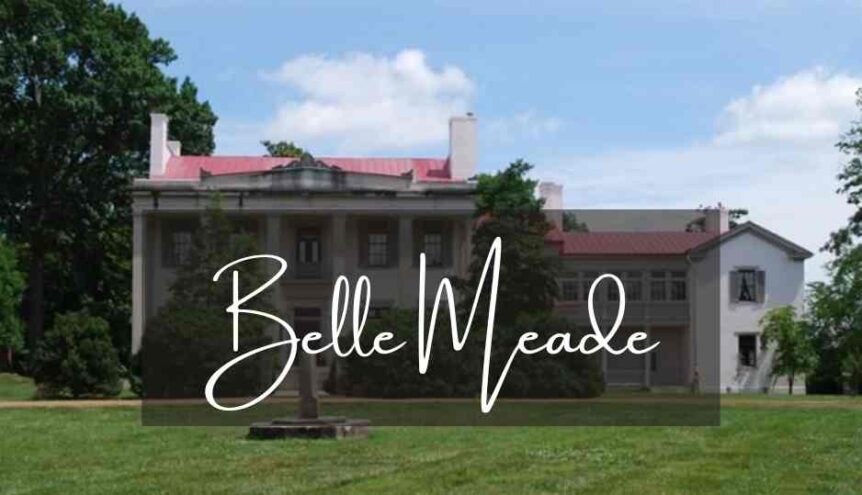 The wealthiest area of Nashville is called Belle Meade. The first time I wandered into this part of the city was when my husband took me to a popular steak house (Sperry’s) for my birthday. We drove past incredible mansions set atop hilly acres of land. I couldn’t imagine living in a home such as these. This is where today’s plantation is located—and it’s aptly known as Belle Meade. It sits at the end of a long driveway and is framed by two massive magnolias.
The wealthiest area of Nashville is called Belle Meade. The first time I wandered into this part of the city was when my husband took me to a popular steak house (Sperry’s) for my birthday. We drove past incredible mansions set atop hilly acres of land. I couldn’t imagine living in a home such as these. This is where today’s plantation is located—and it’s aptly known as Belle Meade. It sits at the end of a long driveway and is framed by two massive magnolias.
I did not tour this one for myself, so I had to gather royalty-free pictures and research information where I could find them. So far, this particular story is one of the more fascinating ones, and I hope you’ll read further to find out why.
John Harding purchased a log cabin and 250 acres of land, which is now where the plantation is located. He boarded horses for neighbors, such as Andrew Jackson. If you read Monday’s post, you’ll know Jackson lived nearby at the Hermitage. Harding also bred thoroughbreds and was very active in horse racing along with his son William Giles Harding.
The building of Belle Meade Plantation began in 1820, but it’s not the mansion we see today. John Harding oversaw the original construction of a brick house set on the original 250 acres. It was a Federal-style home, which surprised me since so many of these plantations are Greek revival. John and his wife Susannah had been living in a log cabin on the property for thirteen years, so this was a definite upward move for them.
Business was on the rise in 1853, which is when William Giles (John’s son) made some renovations to the old home to reflect his family’s success. As you may have guessed, the house was enlarged into a Greek-Revival style mansion. I suppose the Federal-style just didn’t cut it if one wanted to show off their wealth. The red brick was covered with stucco, and a two-story verandah was installed—along with six limestone pillars. Today, those pillars have bullet holes from a Civil War skirmish that took place in the front yard in 1864.
The inside was even more impressive with fourteen-foot-high ceilings, walls covered with paintings of famous thoroughbreds and portraits of the Harding family. Gas chandeliers hung from the ceiling. No expense was too much for the family while enslaved people lived in drafty wood cabins on another part of the property. Eventually the house was modernized with hot and cold running water and a telephone—all before the turn of the century.
But I’m getting ahead of myself. By 1860, William Giles was one of the most successful horse racers in the United States. But as you can imagine, that changed with the onset of the Civil War. In a state that had more volunteers for the Union than all the other Southern states combined, William Giles was a die-hard Confederate. He was also a Brigadier General in the Tennessee State Militia. As the richest man in Nashville at the time, he donated $500,000 to help the South win the war. And when the Union moved into Nashville in 1862, Harding was imprisoned for six months before being released.
You would think that donating a half a million dollars on a lost cause would be the end of Harding, but you’d be wrong. He did better than most. He kept all of his thoroughbreds, even when other farms lost their horses to soldiers on both sides of the war. And it turned out the Civil War was a very successful time for him, even while most of the nation was rebuilding.
In 1867, Harding was the first in Tennessee to auction thoroughbreds bred on his farm. It garnered him national attention, which helped him become the most successful thoroughbred breeder and distributer in the state. He also won more prize money that year with his horses than anyone in the United States.
With the help of his son-in-law (William Hicks Jackson), General Harding shifted from racing to breeding. His plantation became internationally known as a thoroughbred farm and showplace. Still, he depended on the racing world for his success, and that came to a halt in 1893. The country slipped into a financial crisis and the evangelical movement led to the closure of racetracks and the end of gambling.
We know that the success of these plantations required slaves to do the real work. As the farm focused on horse breeding and racing, many slaves became skilled at stonemasonry, millwork, woodwork, and blacksmithing. After the Civil War, most of Belle Meade’s slaves left the farm, but 72 remained as paid employees.
Of these, the most well-know was Robert Green (Bob), who General Harding brought to work on the plantation in 1839. Bob became an expert in everything that related to the thoroughbreds, and after Emancipation, he was the highest paid employee on the plantation. His expertise was well-known, and he was highly respected. When he died in 1906, several white men served as his pallbearers, which was unheard of at the time.
By 1906, all of the remaining 2600 acres were sold, including Belle Mead mansion. At the time, it was the oldest and largest thoroughbred farm in the United States. Today, the plantation is only a small portion of what its original self, and there are now only 24 acres left, which are available to see on a self-guided tour.
Don’t forget to enter here for your chance to win a $50 Amazon Gift Card!






